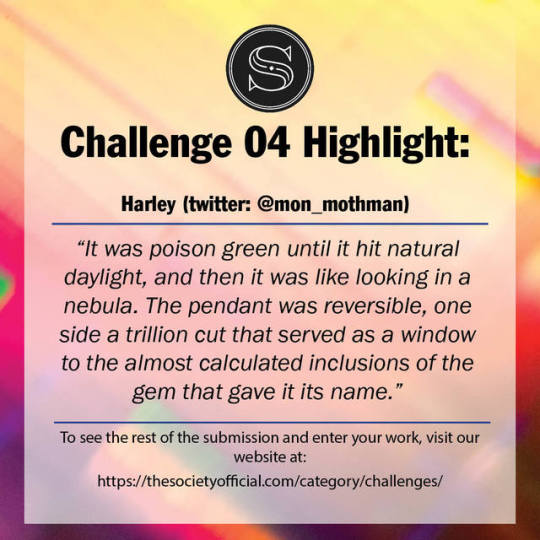Text
Character flaws
- Self-image: arrogant // having low self-esteem.
The subtleties: the character getting him/herself into trouble because (s)he thinks (s)he can do more than (s)he actually can // a lack of confidence, which can be annoying to other characters & can possibly be dangerous, if it surfaces at a crucial moment
The extremes: narcissism or a god complex // self-destruction (either conscious or unconscious)
- Temperament: uncontrollable // so controlled the character goes numb.
The subtleties: irritable temperament, which causes conflict between characters // indifference that can be hurtful to other characters, which also causes conflict
The extremes: verbal or physical violence (possibly homicide) // being cold, calculating and ruthless
- Opinions: strong // weak. (Although weak opinions or beliefs make for flawed characters, strong opinions on their own are not necessarily flaws – it depends on what the character believes so strongly, and if they believe so strongly they are no longer open-minded.)
The subtleties: making enemies who have different beliefs than you // being seen as kiss-ass or wishy-washy
The extremes: radicalism or zealotry // untrustworthiness
- Loyalty: loyal // disloyal. (Again, loyalty is not necessarily a flaw – as long as it’s in moderation.)
The subtleties: annoying heroics // hesitation to help the protagonist(s), which, if the character in questions holds important questions/materials, can be problematic
The extremes: zealotry or being foolishly loyal (unnecessarily leading self/others to danger or destruction due to loyalty – particularly pointless if it’s only to prove a point, rather than a practical reason) // untrustworthiness
Please, feel free to reblog with your thoughts/add-ons!
4K notes
·
View notes
Note
Do you have any advice on how to write a grieving character? Thank you!!
Hi!
Grieving isn’t pretty. It isn’t always dramatic, either – while some people certainly do go home and throw their favorite vase against the wall, some people retreat into themselves and become emotionally unresponsive (that’s what I do). Violence or anger is more likely to occur if the death is sudden – so is retreating into an emotional shell, really, because it’s often a result of shock. But both can occur outside of a sudden death – cancer isn’t always sudden, but many people still become angry when their loved one is diagnosed with or dies because of it. Basically, if the death feels unfair in any way – if it’s sudden, or if it feels like it happened too early, such as in the case of cancer or of some sort of cardiac disaster (a heart attack, a stroke, etc) – it’s more likely to provoke anger or shock, depending on your character’s temperament and attachment to the dying/dead character.
That was just a general disclaimer. Now, onto the meat of grieving!
Firstly, grieving can begin before the person is technically dead – you don’t have to wait for the person to go flatline and physically stop breathing for your other characters to feel a sense of loss. If your character suffered a medical disaster or an accident that rendered them comatose, or if your character is obviously fighting a losing battle (again, terminal cancer comes to mind), your other characters could start grieving them even though they’re still breathing and their heart is still beating. However, the likelihood is that your characters won’t be able to really start working through the five stages of grief until your character actually does physically die, because rarely does death really hit home until it has occurred.
Speaking of the five stages of grief, those are important! They’re as follows:
Denial/Isolation: your characters can’t believe your dead character is really dead. This is a defense mechanism of sorts for your mind – a way to delay at least some of the pain, and give yourself time to process what’s happened (although that processing happens subconsciously, because on the surface you’re denying that anything’s happened at all). If the dead character fought a long battle with an illness before death, this stage may be expedited by the fact that your characters had time to process the character’s dying as it was happening. If the death was sudden in any way, this stage may be prolonged, because it will be harder to comprehend something that happened so quickly, and shock will be more likely to occur.
Anger: the pain your characters were masking in the denial stage starts to come to the surface, and as a response to the pain, your characters get angry (just as many other vulnerable emotions, such as fear, are expressed as anger – anger is a tough emotion, as opposed to fear and grief, so most people subconsciously opt for anger because it makes them feel less vulnerable). They may feel they’ve been robbed of your dead character’s companionship. Their anger may manifest itself in many different ways: isolation, irritability, or self-destructive behavior, to name a few. Their anger may also direct itself at various places: the medical professionals who failed to save your dead character’s life, God for taking your dead character, even the dead character him/herself, if they could in any way be responsible for their own death (if they were driving intoxicated, if they never ate healthily and suffered a heart attack, etc.).
Bargaining: before death, this stage may manifest itself as “please God, just let them live and I’ll tithe my ten percent and go to church every Sunday”, or “please, [Dying character’s name], just hold on and get better and we’ll [do that thing the dying character has always wanted to do]”. (Keep in mind that most people have an astounding impulse to be religious during a time of crisis, whether they’ve been religious in the past or not.) After death, this stage may manifest itself in the “could’ve-should’ve-would’ve” philosophy: “if only we’d taken them to the doctor sooner”, “I should’ve made him stay home”, “I knew there was something wrong with him!”, and so on. This stage is generally an attempt to regain control of the situation – your characters feel like they’re taking some kind of action by offering a proposition, or by placing blame.
Depression: there are two types of depression associated with grief. In the first (which is almost more similar to anxiety) your characters worry more about others: what if I haven’t been there for people when they needed me, how are we going to pay for the funeral/burial services, and so on. Basically it deals more with the practical aspects of the character’s death. The second type is more introspective – your characters may retreat into themselves and analyze old memories of your dead character, and their feelings on everything that’s happened. This type is private, and your characters probably won’t share much about their thoughts if they experience it.
Acceptance: this stage is marked by withdrawal and calm – it can sometimes be difficult to distinguish from depression. It’s not a stage of joyous frolicking and exclaiming, “It’s okay! I understand everything about [Dead Character’s] death!”. Your characters may still not understand the purpose of your dead character’s death, but understanding and acceptance are not synonyms, nor are they mutually inclusive. The important thing about this stage is that your characters can make peace with the death, and can move on.
Keep in mind that while I’ve listed these stages in what is regarded as their general order, every person (and character) grieves differently – they may experience these emotions in a different order than that above. They may also go through one or several of the stages more than once, or cycle through the first four of them multiple times before reaching the fifth. Some characters may not even reach the fifth at all – depending on the circumstances of the death and the character’s attachment to your dead character, they may never fully accept your dead character’s death. The stages above are just a general framework for grieving.
Also, keep in mind that if your character’s death was tied in any way to traumatic incidents for your other characters, it may complicate the grieving process for those other characters, because the character’s death will be tied to other painful or triggering memories.
I hope this helps! If you need anything else, please feel free to ask. - @authors-haven
4K notes
·
View notes
Text
Quick Tip on Giving Characters Flaws:
Turn their best qualities completely upside down. Turn those traits around on them. They’re compassionate? Maybe they’re way too easily forgiving and get screwed over by it repeatedly. Extremely outgoing and extroverted? Maybe they’re apathetic to those who struggle with even having small talk, and make those people highly uncomfortable. Brave? Maybe they can be reckless and often get themselves in unnecessary danger.
Don’t sprinkle in flaws at the end. Base them on something. They should enhance your character and make them more three-dimensional. They shouldn’t be an afterthought, and the goal shouldn’t be to make your characters “relatable”.
8K notes
·
View notes
Text
On Writing Genius | The Archetypes
Genius is often thought of as synonymous with “intelligent” or “smart” or “eidetic memory and know-it-all.” but that isn’t the case. True genius, or at least in terms of traits and characterization, is the ability to use what you have in ways that others won’t. Some geniuses are obviously smart, and some are geniuses in ways so subtle that the character appears deluded.
This is something I can (and have) talked about for hours at various unfortunate people. “Genius characters” is actually an umbrella term that covers a whole range of character Archetypes, from the Sherlock Holmes to the Tortured Mastermind; each one is different, because the genius of a character is inherently subjective. There are a lot of cross-overs from archetype to archetype, and the overlap can be really interesting to use when creating your genius character, but I’ve broken them up as best I can by defining characteristics for simplicity.
Remember to use the archetype as a base and build on from there, to make your genius characters as interesting as possible; they may be geniuses, but they are also human. Flesh them out, lace nuances into their character, make them hate reading or like videogames.
The Ignorant Intellectual
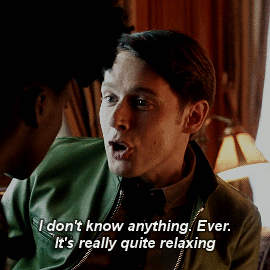
I.e, the Dirk Gently.
The Gently-esque archetype is a perfect place to start, because it really demonstrates the subjective nature of a genius character. Arguably, Dirk isn’t a genius at all— he simply follows where the universe takes him, acting on the whims and impulses it gives him, so how can he be a genius?—but the genius comes in when he joins the dots together. He hasn’t been made smart by the holistic power that the universe gave him, but he has learned to adapt and survive.
This kind of genius is defined by a lack of large quantities of knowledge, but a certain intellectual capacity. These characters are usually thrown into (or willing walk into) situations, completely ignorant, where their true genius shines through their ability to talk fast, think outside the box and learn as they go along. They are also enablers, which is what sets the Ignorant Intellectual apart from the Holmes-type genius; whereas a Holmes would have the answer before anyone else, a Gently would find an answer by helping others see it first. For example, they might make one connection that is really obscure, and that will allow others to suddenly work out the rest. As such, these types are great survivors, often through luck and clever bullshitting, but they’re at their best with others.
The Naturally Intelligent Intuit

I.e, The Sherlock Holmes
And I mean bookHolmes folks, not BBC Sherlock. The Holmes we see on the BBC TV series is better classified as a Tortured Genius; he has natural intelligence, true, but he’s cold and lacks intuition on the same level as his book counterpart.
The Holmes archtype possesses natural intelligence combined with a depth of warmth and intuition. They may often be arrogant or appear aloof, but only because they are ignorant of the superior speed that their mind can work at, or forgetful of it. The thing here is natural intelligence; anyone can learn to think intelligently, but very few are born with a natural ability to process and store information, and then apply it innovatively. However, this intelligence alone doesn’t make for a genius character: they should also possess very good intuition, which is always backed up by evidence supplied by their intelligent logic.
Holmes was a trailblazer in this area. He practically made the archetype, as a matter of fact, but there are aspects of his character that ought to be kept separate. One of these is his reliance on unhealthy coping mechanisms, and another is his tendency to be erratic or eccentric—both of these are traits that defined him as a person-character, rather than marks of his genius archetype.
The Tortured Genius
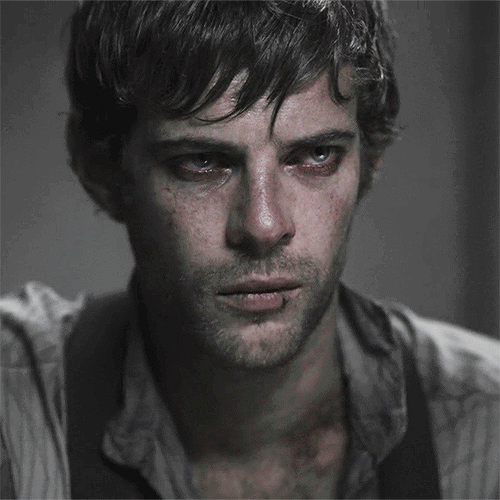
I.e, the Victor Frankenstein
Although not inherently evil, these characters are often plain nasty people—but it’s not their fault, obviously! They would say something like “It’s because I’m so smart, nobody understands me, I’m tortured by my own intelligence to the point where I am are alienated from society—!”
No, Victor, sweetie, it’s because you’re an arrogant arsehole. The archtype isn’t quite that simple, but Doctor Frankenstein is a very good example of the fundamental basics.
I like this one for its flexibility. I mentioned that BBC Sherlock is a Tortured Genius and while book Sherlock almost fits the shoe, his saving grace is his humility and warmth. On the other hand, characters like Doctor Frankenstein and BBC Sherlock are arrogant, and either refuse to acknowledge their flaws or, acknowledging them, refuse to better them. Sometimes, a character like this will actively be worse. BBC’s Sherlock is actually a pretty cheap take on the Tortured Genius, but that may also be because he isn’t a very well-substantiated interpretation of the book canon… anyway, I digress. The point here is that these characters are complex to the point where they twist themselves into knots, often shaped by tragedy or trauma.
They see themselves one way, and the world another. A tortured genius could be anything from initially mild-mannered to downright cruel; either way, their internal or first intentions are usually good. They tend to change throughout their story, as their flaws get in the way and they wrestle with the feeling that nobody is ever going to truly understand who they are. The result is a lot of internalised rage or self-hatred, until they explode or start a downwards spiral of unhealthy coping mechanisms. They often have at least three of the following:
A fear of failure that pushes them to extremes
Hubris (excessive pride)
Arrogance, so much so that they think they can do the impossible (solve impossible cases, reverse death, create life etc)
Narcissism designed to cover up serious self-esteem issues
Put too much pressure on themselves; think they can reach unattainable goals and experience a huge drop of self-worth when they fail.
Unhealthy coping mechanisms
Either actively shun others or are shunned because they make no effort to include others that they deem less intelligent.
Equate worth to intelligence (see above point)
Something to be wary of is the mental health aspect of a tortured genius. It’s true that these characters are usually depressed or considered insane, but the poor mental health is always caused by their actions, rather than their mental health issues causing them to be a tortured genius. Remember, this archetype is never a very nice person which leads to them being miserable; however, if you had a person with Schizophrenia and they were also a genius when their plot began, they would struggle, yes, but it isn’t the same thing. Anyone with a pre-existing mental health condition would.
Don’t use mental health issues to drive a character like this, because they never excuse the sort of behaviour that the archetype calls for and this only strengthens the stereotype of people with mental health issues being dangerous.
The Accidental Pedant

I.e, the Spencer Reid.
I like to call this one the soft genius. They’re the most genuine, kind-hearted of the lot. Half of the time, they don’t even realise their own genius until it’s pointed out to them, and the other half of the time they’re aware of it but don’t consider this aspect of their personality as anything other than a cool way to store information. Usually, their genius is a byproduct, or in combination with, an eidetic memory, incredibly high IQ, asperger’s (although this one is a dicy area, as it can perpetuate harmful stereotypes) or savaunt syndrome. In other words, it’s a passive sort of genius that comes naturally to them because of something out of their control.
These types of geniuses have oodles of information stored in their brains, and love to share it. It’s just that… not everyone wants to hear it. They spontaneously blurt out facts, but it doesn’t seperate them from others. Unlike the majority of genius archetypes, the Accidental Pedant is still loveable, kind, thoroughly sincere and usually gets classified as a dork. In short: all round goodness stuffed full of knowledge.
Some things to avoid in this archetype are Autistic Spectrum Condition-coding (if your genius is on the autistic spectrum, then they’re on the autistic spectrum. Make it explicit and don’t try to use the fact to negate the value of their intelligence) and infantilization. Too often, the Accidental Pedant is shown to be like a big baby with adult intelligence. In the case of Spencer Reid, you can be mistaken to think that at first as the other members of his team call him “kid”; but as the seasons continue it becomes clear that he is a valued, equal member of the group respected for more than his eidetic memory.
The Trickster

I.e, the Loki (of Norse mythology)
As with Sherlock Holmes, I’m talking about the archetype seen in mythological figures, like Anansi or Loki, rather than modern popular media. (But I couldn’t resist the marvel Loki gif).
As with the Tortured Genius, the Trickster isn’t inherently evil but is still… questionable. They think first and foremost of themselves before others, and have no problem with causing chaos to meet their ends. Their genius is one of wit and wily charm, a smooth tongue and all the cunning of a high-flying conman. In other words, some might kill or endanger others for their own delight (I’m looking right at you, Loki) but others would steal, cheat and lie but never kill. And sometimes pay back those that they have robbed, in due course.
Usually a jack-of-all-trades, with their trickster-ness ranging from harmless pranks to full-scale chaos to simply being very cunning; they walk the line between evil mastermind and trickster, but they have two defining traits that set them apart:
Often feel remorse and know the limits that they should stay within. Leaving these limits usually leads to their downfall. More often than not, they have no desire to exceed the limits.
Their motivations are skewed, but not truly evil, and usually small. They would endanger their family to get some satisfaction after a petty slight, but wouldn’t harm their family in order to take over the world or exceed their station (mythological Loki being the former and MCU the latter)
The Evil Mastermind

i.e, The Moriarty
Immoral, chaotic, cruel; this genius is one who channels all of their creative energy into wrongdoings. Unlike the Trickster, these wrongdoings are pure horrors; they are intended to cause harm and are based on larger ambitions than brief amusement or emotional satsfaction. They are usually intelligent in all forms, and deeply selfish (or they believe that they are helping their family or a loved one, but actually they’re just hurting a lot of people). The ends will always justify the means, and nothing else matters after that.
Some like to have people do their foul play for them, and others like to get their hands dirty themselves. This is the sort of genius who carries themselves with class, style and sophistication; they are fully aware of their own intelligence, but are usually careful to avoid a downwards spiral.
You may want to keep in mind that not every antagonist is an evil mastermind. Macbeth would probably more accurately be described as a tortured genius, as would Theon Greyjoy and Ryzek Noavek.
Each of these genius archetypes can fall into the role of either antagonist or protagonist
; say, an evil mastermind becomes a highly immoral protagonist for personal gain. It would be heckin awesome to see an Accidental Pedant as an antagonist, if the cards were played right.
12K notes
·
View notes
Quote
Write your first draft with your heart. Rewrite with your head.
Mike Rich (via wordsnstuff)
605 notes
·
View notes
Text
World Building Prompt #153

41 notes
·
View notes
Note
How would you go about flipping positive character traits on their head? What's your philosophy behind this and can you provide some examples of this idea in action?
I once watched a really interesting video about how femininity and masculinity is portrayed in literature (and more specifically, modern literature) and it focused mainly on “strong female characters”. I really liked something that this person said near the end of the video about how suppressing certain positive emotions and traits can make them negative, and have since adopted that as my personal manner of fleshing out character depth.
I wrote out the examples she gave and linked her video below if you’d like to watch the entire thing. It’s really well done and she gives a really eloquent and complete perspective that resonates a lot with me as a writer.
Positive Masculine Traits/Emotions
focus when suppressed becomes small-mindedness
confidence when suppressed becomes ego
discipline when suppressed becomes control
protection when suppressed becomes aggression
Positive Feminine Traits/Emotions
vulnerability when suppressed becomes oversensitivity
desire to nurture when suppressed becomes neediness
cooperation when suppressed becomes submission
subtlety when suppressed becomes manipulation
ability to create beauty when suppressed becomes vanity/shallowness
Basic Emotions When Suppressed
love when suppressed becomes possession
sadness when suppressed becomes depression
anger when suppressed becomes rage
fear when suppressed becomes terror
If you’d like to check out the video that inspired this response, I’ve linked it here. The Authentic Observer makes really interesting and well-thought out video essays about literature and media, and I definitely recommend you check her out. If you do, tell her I sent you!
VISIT THE WORDSNSTUFF WEBSITE AT WORDSNSTUFFBLOG.COM
If you enjoy my blog and wish for it to continue being updated frequently and for me to continue putting my energy toward answering your questions, please consider Buying Me A Coffee or supporting me on Patreon.
Wordsnstuff also has a newsletter, which you can subscribe to by filling out the pop up on wordsnstuff.tumblr.com.
I’d also really appreciate it if you would check out my studyblr, which helps keep me motivated as a full time student. I also run writing sprints over on snapchat.
3K notes
·
View notes
Photo
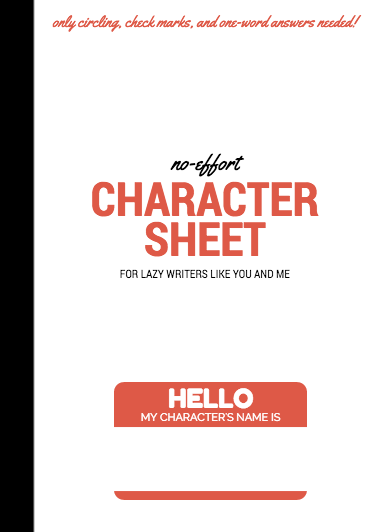

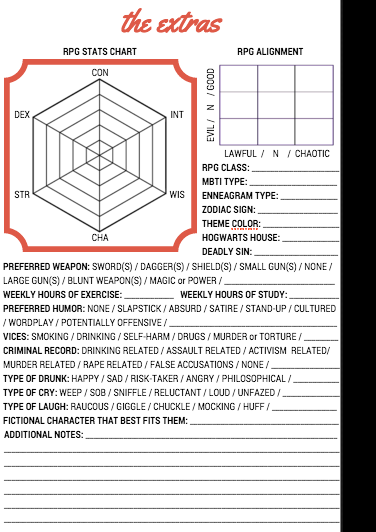
From the makers of the no-effort character checklist, I bring to you… The no-effort complete character sheet for lazy writers like you and me™!
Because the extra effort I put in staying up until 3 am to do put this together can save us all a lot of effort filling out longer character sheets ^^
You’re supposed to print it out and fold it in half to make a little booklet but you can save ink and do it on your computer :P
Link to PDF on google drive (fixed typo)
90K notes
·
View notes
Text
How I turned an idea into an outline
With NaNoWriMo around the corner, I thought I might show you how I plotted my novel.
This is the story structure I used:
0% inciting incident
0%-20% introduction in the world, ends with a point of no return
20% first plot point: the hero receives his marching orders
20%-50% response to the first plot point
35% first pinch point: reminder of the nature of the antagonistic force
50% midpoint: big fat plot twist that changes the hero’s AND reader’s experience
50%-80% attack: the stakes are higher now
65% second pinch point: again reminding the reader of the antagonistic forces at hand
80% second plot point: the final injection of new information into the story to give the hero everything she needs to become the primary catalyst in the story’s conclusion (no new information past this point)
80%-100% resolution + final conflict + return home

I didn’t make this up. I think it’s by Larry Brooks, if The Internet informs me correctly. Fun Fact: once you pay attention to it, you’ll see this structure everywhere. Just take a look at any Harry Potter book, for example.
These points are the “bones” of my story. Next, I decided what “flesh” to put on them.
I simply made a list of things I like to read about:
Books about books and libraries
Magic
Quirky characters
Intelligent, fast-paced and sometimes silly
So, I combined this list and the structure points into a story that makes sense. Because I don’t want to spoil my plot / I am still to shy about my wip, I will make up a new plot for this post, so I can show you.
0%: The hero does something magical without knowing how she did it. She discards it, because everybody knows it can’t have been real.
0%-20%: We see the daily life of the hero: she is unhappy because all she wants to do is read, but she is not allowed to. She reads in the dead of night and is punished for it by her evil stepcousin. She finds a book on magic.
20% It all clicks together: she can do magic!
20%-50% The daily life for the hero changes. Instead of reading all night, she practices magic. She now loves books even more. She has little victories over her evil stepcousin, but hasn’t won yet.
35% The evil stepcousin finds out that she can do magic and takes away the magic book.
50% She discovers she can do magic without the book.
50%-80% The hero is not the only one who is bullied by the evil stepcousin. Her younger cousin is a victim as well, and he doesn’t have magic to defend himself. The stakes are raised, this is bigger than herself now. The younger cousin also wants to read, so they have several bonding moments over reading.
65% The evil stepcousin hurts the younger cousin, he’s in a coma now.
80% The hero discovers the evil stepcousin could do all these evil things because he knows magic too.
80%-100% The hero confronts the evil stepcousin, fights him off, nearly loses but wins in the end. He gives up and releases his power over the younger cousin who wakes up from the coma.
It’s not the most genius plot ever, but I literally made this up in minutes. So can you! And imagine the genius plot you can come up with if you spend more than a few minutes on it.
Then I calculated how many scenes I need in which part of the story. My wip is a YA or 12+ book, so I want it to contain about 75,000 words in total. I want my scenes to be around 1,000 words long to keep it snappy, so I need 75 scenes.
Scene number 1 (0%) is the inciting incident, scene number 15 (20%) is the first plot point, scene number 26 (35%) is the first pinch point, scene number 37 (50%) is the midpoint, scene number 49 (65%) is the second pinch point, scene number 60 (80%) is the second plot point and scene 75 (100%) is the last scene.
Some sidenotes on the 1,000-word scenes:
That’s more of a vague rule of thumb than a strict rule. If your scene needs to be longer or shorter, make it longer or shorter of course. My wip has some 2,300-word scenes as well.
Having 1,000-word scenes does not mean I have 1,000-word chapters, that would be really short. I will divide my novel into chapters after I’m finished writing my first draft.
For NaNoWriMo, maybe you could write scenes of 1,667 words, so you do one scene per day. A 50,000-word novel has 30 scenes of 1,667 words. Inciting incident is at scene 1, first plot point at scene 6, first pinch point at scene 11, midpoint at scene 15, second pinch point at scene 20, second plot point at scene 24 and scene 30 is your last scene. That’s just an idea, you got to see what works for you.
Then I made up in one sentence what will happen in every scene. For example: “They meet the dragon and he sends them on a sidequest.” Now my outline consists of 75 one-sentence scenes. This way, I prevent the problem of the sagging middle and other pacing problems and I still get to surprise myself when writing.
From those one-sentence scenes, I flesh out every scene into a first draft, using the process I described in my post How I never have to face an empty page when I write.
And that’s my first draft! I hope everything is clear. Feel free to ask me questions if it isn’t.
I’m gonna tag a few people I admire, who I hope are interested. If you aren’t, feel free to ignore me, or message me to take you off my tag list. If you would like to be added to my writing advice tag list, let me know.
Keep reading
23K notes
·
View notes
Text
Ways to Get Inspired to Write That Character
1. Create a Mood Board
A mood board is a collage of images, text, colors, or materials. that are used to “to evoke or project a particular style or concept”. Basically, it helps set the “mood” for whatever you are working on. Mood boards are often used by interior decorators and artists but can also be used for writing. I love creating mood boards for each of my characters. It helps me get a a feel for the character I am writing. For example, one of my characters is an elven swordswoman. For her mood board I used images of trees, flowers, decorative swords, and artwork of elves. It really helps when I’m trying to write from her perspective.
To create a mood board, simply find images or text that remind you of your OC. I use google images or even pinterest to find images. Its easy and fun.
2. Take Quizzes for Your Characters
Okay, this may seem a little silly but it totally works. Take a quiz from your characters point of view. Select the answers you think your character would select. I personally like doing this with personality quizzes such as the Myers Briggs tests because I can use the results as a foundation for my characters personality. It’s fun, effective, and actually productive.
3. Create Playlists
I listen to music a lot because it gets my creative juices flowing. So, if I find myself stuck on a particular character, I make a playlist of songs that remind me of that character. I actually like doing this before I start working on a character so I can listen to it while working on them. It sets the mood and gives you better results. Give it a try.
4. Study Some of Your Favorite Characters
Sit down, take out a notebook, and start taking notes on some of your favorite characters from literature, TV, or movies. What made you attracted to this character? What made you hate this character? What is your favorite thing about this character? Answering these questions will help see why you feel that way towards your favorite or least favorite fictional characters. Use your notes as a guideline on how to make readers either hate or love your OCs.
5. People Watch
Yeah, this sounds creepy but it is very effective. Go to the park, take a walk, or simply sit at the window and observe the people you see. Take notes on the little things that they do. Do they walk a certain way? Do they stand up straight or do they slouch? What quirks do they have? Do they drum their fingers while sitting? Do they tap their foot while waiting in line? Write down what you observe and you can apply the results to your characters. It will give your original characters a more realistic touch.
Feel free to add to this list!
13K notes
·
View notes
Photo

1 note
·
View note
Text
Little details to give your characters
Picks M&Ms out of trail mix
Bites fingernails/toenails
Has a small collection of water bottles by their bed
Cracks knuckles
Loves the smell of nail polish remover
Is a pollotarian
Only listens to music from one decade
Never wears matching socks
Wears college sweaters (bonus if they don’t go to that school or know anyone who does)
Always chews gum/has gum
Constantly gives everyone nicknames based on a pun of their name
Laughs a little after they speak even if they didn’t say something funny
Always wears solid color hoodies
Constantly quotes/references movies
Only calls people by their full first name or full first and last name
Has a unibrow
Afraid of the dark
Impeccable manners
Smells like Vicks Vaporub
Steps over the cracks in the sidewalk or steps on the cracks in the sidewalk (if they hate their mother)
Smooths their eyebrow hairs down
Plays with their eyebrows/hair when sleepy
Picks at their skin (mostly their face)
Hugs people when they first meet them
Doesn’t shave their armpit/pubic/leg hair
Takes off their bra/gets naked as soon as they get home
Always has a snack with them
Plays with their body jewelry whenever they’re nervous/mad/sad
Likes bouncing their legs
Draws/writes on skin
7K notes
·
View notes
Text
Ways to Improve Writing Skills
1. Read. Even things outside of you preferred genre. The best books I’ve ever read go beyond the structure of the genre and touch well on things that are usually better handled in other types of writing. Reading also shows you more examples of characterization, scene structure, etc., and don’t be afraid to critique the book as you work through it.
2. Critique. Being helpfully critical of other writing is sometimes easier than working with your own, because you only have to work with what’s in front of you (like a reader of your story would). This can help you better prioritize what needs to be fixed first to last, plus you can get better at picking out problems and figuring out how to fix them.
3. Observe. In public, and maybe sometimes private, take some time to notice your surroundings and how people go about their lives. This can help with creating better description and a more natural setting/flow to scenes.
4. Talk. This is more useful for ideas, but find someone to bounce things off of. It doesn’t have to be anything big and they don’t need to know the whole story, just take one question like “How would you react if you suspected your friend was kidnapped?” and listen to what they say. The answer may not work in your story, but it can give you a new perspective that writers always need.
5. Take a break. And do some of the things above. When you return to your work, you may notice a difference in writing skill, even if it’s only on a tiny part of the piece. Breaks allow your brain to synthesize what you learn and let you recharge your energy, usually resulting in more confidence if handled correctly.
Thinking of asking a question? Please read the Rules and Considerations to make sure I’m the right resource, and check the Tag List to see if your question has already been asked.
7K notes
·
View notes
Text
All About Writing Fight Scenes

@galaxies-are-my-ink asked,
“Do you have any advice on writing fight scenes? The type of scene I’m writing is mostly hand to hand combat between two experts. I’m definitely not an expert so when I try to write it, the scene ends up sounding repetitive and dull.”
Fore note: This post is coauthored by myself and one of my amazing critique partners, Barik S. Smith, who both writes fantastic fight scenes and teaches mixed martial arts, various artistic martial arts, and weapons classes.
I (Bryn) will tell you a secret: I trained MMA for seven years, and when I write authentic hand to hand fight scenes, they sound dull too.
The problem with fight scenes in books is that trying to describe each punch and kick and movement (especially if it’s the only thing you’re describing) creates a fight that feels like it’s in slow motion.
I write…
Lowering her center of gravity, she held her right hand tight to her face and threw a jab towards his chin. He shifted his weight, ducking under her punch. His hair brushed against her fist, and he stepped forward, launching a shovel hook into her exposed side.
But your brain can only read so fast. In real life that series of events would take an instant, but I needed a full eight seconds to read and comprehend it, which gave it an inherent lethargic feel.
So, we have two primary problems:
How do we describe this fight in a way the reader can understand and keep track of?
How do we maintain a fast paced, interesting fight once we’ve broken down the fight far enough for readers to understand it?
(We will get back to these, I promise.) But for now, let’s look at…
Different types of “fight scenes:”
Keep reading
9K notes
·
View notes

